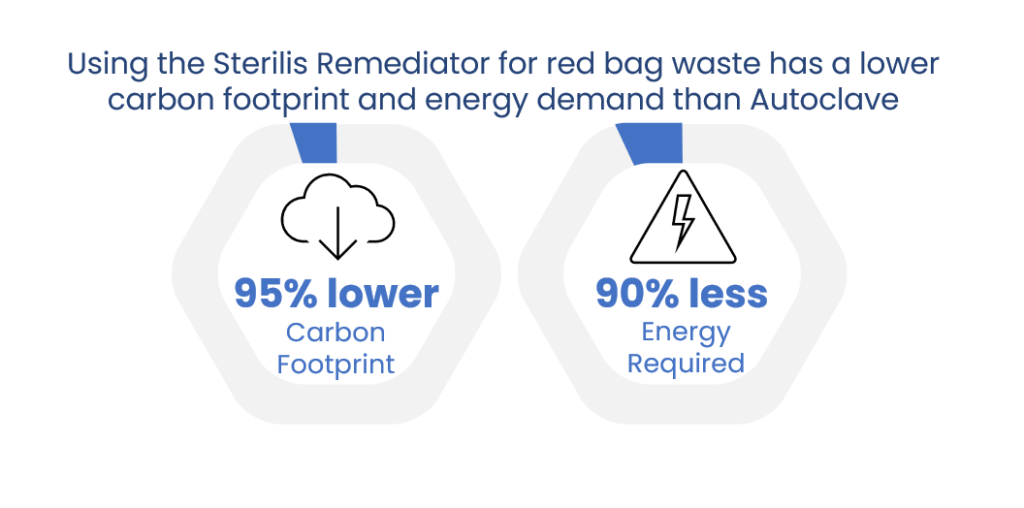
It is estimated that the life science industry produces over 5.5 million tons of plastic every year. Plastics are used in 80-90 percent of medical supplies, ranging from personal protection equipment, pipettes, tubes, test kits, toxicology screening items, sharps, and others. Because medical waste is highly regulated, plastic components cannot be easily recycled. Instead, they are typically autoclaved1 and landfilled, burned for energy production (called waste-to-energy, or WtE), or incinerated without energy capture. These disposal methods carry emissions, energy use, and other impacts to the planet.
Introducing a circular solution for life science single-use plastic waste
MilliporeSigma, the Life Science business of Merck KGaA, Darmstadt, Germany in the United States and Canada, is taking initiative to help customers in healthcare, clinical, and pharmaceutical research labs, to reduce their environmental impacts by addressing single-use plastic.
To that end, the company committed to creating circular plastic recycling solutions that reduce the overall volume of virgin plastic derived from fossil fuels in the life science value chain. Through its collaboration with Sterilis Solutions, MilliporeSigma offers a way to convert biohazardous waste into non-hazardous, plastic shred that has the potential to be recycled, avoiding the impacts of autoclaving and incineration, using a device called the Remediator.
Developed by Sterilis Solutions, the Remediator is a low-energy footprint instrument that safely sterilizes and processes red bag waste and sharps using superheated, high-pressure steam. After the mixed-material waste has been sterilized in compliance with local waste regulations, the device’s two-stage, rotational grinder shreds the contents into 9mm2 pieces, ready to be sorted and recycled.
Understanding the Environmental Impact of Plastics Disposal
MilliporeSigma enlisted the expertise of Pure Strategies, a sustainability consulting firm, to complete a life cycle assessment (LCA) and evaluate the environmental benefits and impacts of waste processed via the Remediator versus typical bio-hazardous waste treatment and disposal to ensure it provides the intended advances.
Pure Strategies calculated the carbon footprint, energy demand, and toxicological impacts on human health and ecosystems across eight waste processing and end-of-life scenarios. Five scenarios reflected the typical methods that MilliporeSigma’s customers use to process and dispose of medical waste in their respective geographic regions, while three scenarios treated waste using the Remediator prior to waste disposal.
A Solution to Lower Carbon Emissions and Energy Demand
The results from the LCA show that waste processed via the Remediator demonstrates overall lower carbon emissions and reduced energy demand compared to typical biohazardous waste disposal.
Regardless of the end-of-life treatment (recycling, or WtE), autoclaving requires 90 percent more energy than the Remediator, making it a better choice for customers looking to reduce energy consumption. For every pound of waste processed by the Remediator, one less pound of carbon is emitted into the atmosphere. Customers that use the Remediator to reduce operating expenses receive the added benefit of lowering their carbon emissions as well. (see figure 1)
Using the LCA results, Pure Strategies developed an environmental impact calculator tool for MilliporeSigma and Sterilis to share with their customers, enabling them to make more informed, data-driven decisions to reduce their own supply chain impacts based on their local energy grid, waste mix, and available end-of-life treatment options. The LCA third-party review is complete and full results are available here. The results are based on an ISO 14040/44/67 compliant, peer-reviewed LCA and Product Carbon Footprint.
“Our aim is to find lower impact solutions to treating bio-hazardous lab waste for our customers. Our collaboration with Sterilis Solutions and Pure Strategies provides customers with better options when using the Remediator,” notes Jacqueline Hollands, Global Manager, Product Recycling & Innovation, MilliporeSigma.
Andy Marshall, Sterilis Solutions added, “The Remediator reduces the overall footprint of biohazardous waste management, while the new calculator tool helps our clients to better understand their environmental impacts, identify areas for improvement and realize important business benefits – including lower energy demand and reduced carbon emissions.”
Figure 1 Chart: Using the Sterilis Remediator for red bag waste has less environmental impact than Autoclave.
References
- Autoclave, low temp incineration w/energy recovery (WTE) & high temp incineration relatively high energy use & emissions – Chantelle Rizan, Mahmood F. Bhutta, Malcom Reed, Rob Lillywhite, The carbon footprint of waste streams in a UK hospital, Journal of Cleaner Production, Volume 286, 2021, 125446, ISSN 0959-6526, https://doi.org/10.1016/j.jclepro.2020.125446
- Direct air emissions from regulated medical waste incineration (PM, SO2, CO, NOx, HCl, HF, TOC, CO2) – Załuska, M., Werner-Juszczuk, A.J., Gładyszewska-Fiedoruk, K. (2022). Impact of COVID-19 Case Numbers on the Emission of Pollutants from a Medical Waste Incineration Plant. Aerosol Air Qual. Res. 22, 210399. https://doi.org/10.4209/aaqr.210399



